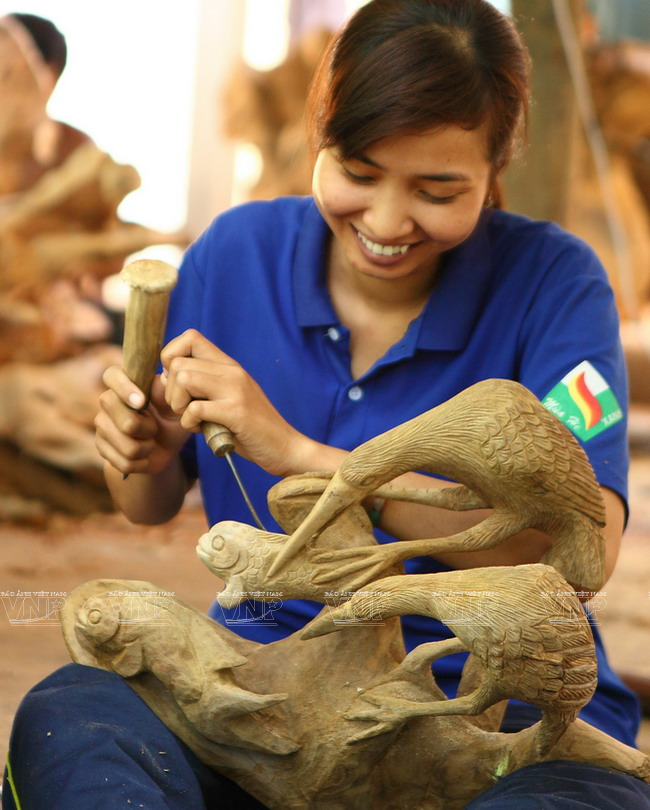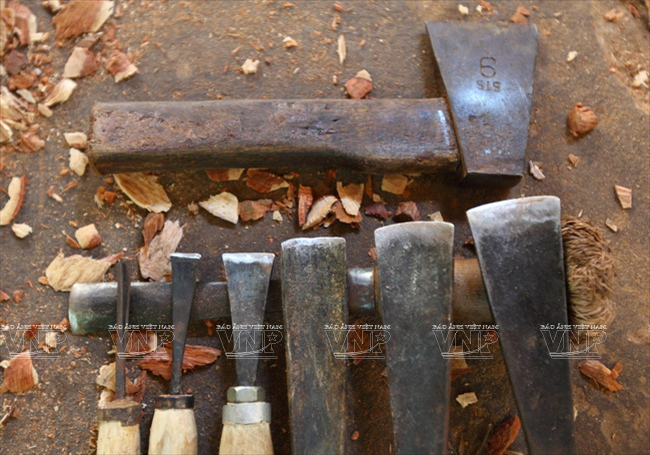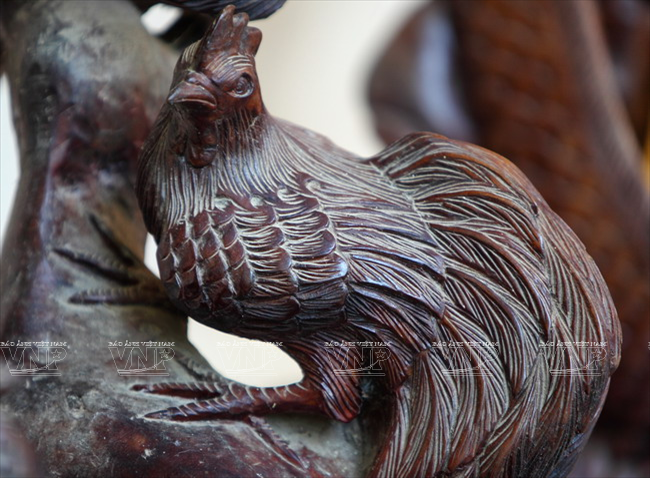 Kom Pong Chray Pagoda is well-known for its teaching of wood carving for children of the Khmer people. Photo: Nguyen Luan/VNP  The craft of wood carving has existed for more than 12 years. Photo: Nguyen Luan/VNP  The artisans at Hang Pagoda have turned the stumps of trees into unique artworks. Photo: Nguyen Luan/VNP  Based on the natural shapes of the stumps, the artisans at Hang Pagoda create different artworks. Photo: Nguyen Luan/VNP  All processing steps are done by hand. Photo: Nguyen Luan/VNP  A monk at Hang Pagoda carves a big peacock. Photo: Nguyen Luan/VNP  The sculpture requires the meticulousness, thoroughness and skillful hands of the artisans. Photo: Nguyen Luan/VNP  The craft is taught by one person to another. Photo: Nguyen Luan/VNP  So far, over 60 Khmer young people have been taught the craft. Photo: Nguyen Luan/VNP  Simple tools of the artisans at Hang Pagoda. Photo: Nguyen Luan/VNP |
Monk Thach Suong, verger of Hang Pagoda, said: “Traditional wooden sculpture is full of the Khmer culture, so it should be taught for preservation and promotion. Moreover, this job brings a steady income, enabling the Khmer young people to earn their living when they return to the secular life.”
Through the skillful hands of the artisans at Hang Pagoda, the stumps which seem wasted become artwork. Many sculptures, such as dragons, lions, tortoises, phoenix, animals, birds and items describing the life and production activities of the Khmer people in the South are displayed at the main chamber, residence, living room and study room of the pagoda.
In 2005, monk Thach Suong established the Hang Pagoda’s Sculpture Club with over 10 members who were monks with high professional skills. So far, the club has produced more than 1,000 artworks ordered by visitors. Good news spread and the club’s artworks have quickly become sought after by domestic and foreign visitors. In particular, there was an item worth hundreds of millions of dong ordered by a Cambodian customer. One of the most famous, unique and spectacular works of the club which attracts a great number of people to see when they visit Tra Vinh is “Nine dragons struggle for the gem”, size 3.5m x 3.5m. It is made from the roots of nine ancient trees.
Wood carving has not only helped many young Khmer people build a better life, but also contributed to preserving a traditional value. That’s why Hang Pagoda is now an interesting destination for visitors to Tra Vinh.
| Some wooden sculptures by the artisans at Hang Pagoda
|







